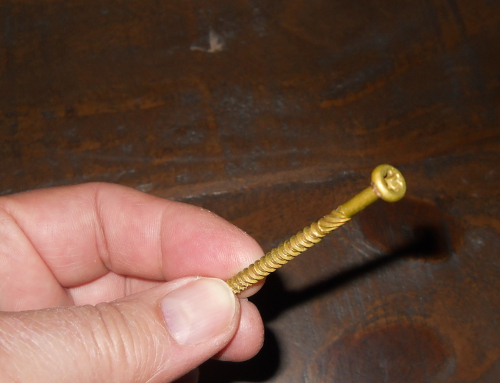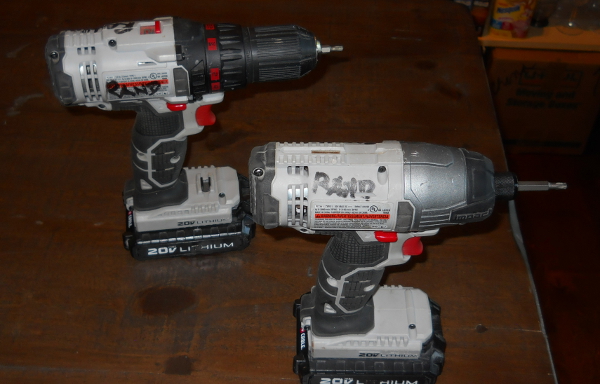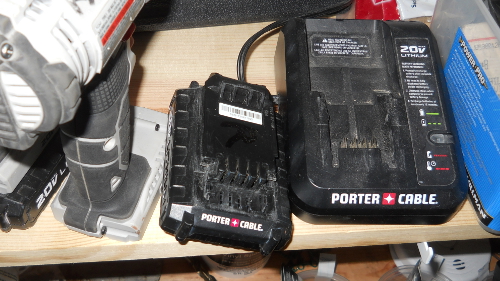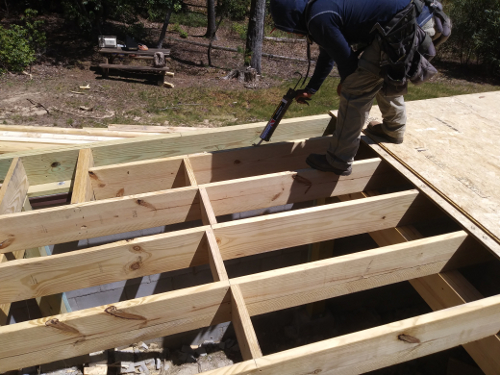The good old-fashioned hammer is still around. But used MUCH less often than 10 or 20 years ago. Today, quality houses are being put together mainly with more screws and far fewer nails.
That’s a Hillman Power Pro Premium Exterior Wood Screw above, with a T25 star-drive. The screw is about 1/8″ in diameter to the outer edge of the threads.
Hillman says it is a coated screw that is guaranteed for the life of the project not to corrode (in treated lumber, cedar, redwood) in an exterior application. There are different sizes, such as the T20 star drive. Mainly the T25 and T20 screws have replaced perhaps about 50% of the nails that used to be used to build a house.
Why: Because ordinary nails back out, pop-out and rust. Even galvanized nails can rust, when the coating is damaged by a hammer hitting the head.
Having said this, power-drive gun nails fed from compressor driven nail guns are very much in use. And yes, those account for about the other 50% of what a hand hammer used to do.
But all construction personnel know that the best quality construction is accomplished through the use of screws. Why: because they CANNOT back-out (as long as they went into solid backing to begin with). And the type of screws above are self-tapping (no pilot holes need to be drilled in wood). And the screw heads are flared for countersinking.
Hand hammering may only account for perhaps 5% to 10% of installation these days in building a house. And we’ve seen people using hand hammers to excavate dirt under ladder feet to level the ground there. Hardly what most people would associate with normal hammer usage.
Nail guns weigh around 7-1/2 pounds (Paslode 9 series) and the nails add another pound, then there’s the inconvenience of the pneumatic hose coming from the noisy compressor, getting tangled everywhere and adding another pound or so, meaning a nail gun might be nearly 10 pounds, while being tethered to a hose. That’s a lot of weight to throw around on one arm all day long.
This is one of the reasons many house builders prefer using a screw gun. It only weighs about a pound and most are cordless, freeing the carpenters to go up ladders, walk roofs and go other places without having to worry about getting tangled up with a cord or hose of any kind. Nail guns became popular on house construction sites in the late 1970s and early 1980s. They have been the tool of choice ever since.
However, drill guns used to install superior screws came about since the last 10 years or so (2010+/-). Since screws are finding favor with builders for higher quality construction, screw guns (drills with star drive bits) are gradually taking the place of nail guns for many applications, such as: roof sheathing, floor sheathing and structural connections, and decking. And once screws are used for so many things, the fact they are there on the jobsite, they become used for more applications, due to their convenience and more solid connections.
In about 2017, Lowe’s had a sale: 2 cordless drills for $99 including a charger and (2) 20v batteries and a red zipping canvas carry bag. The drills are Porter-Cable. I bought these and nearly daily, I see other tradespeople that did also. They take a licking and keep on ticking. We would not have thought they were the equal of Makita or Milwaukee, but they refuse to die. One of the drills is a normal rotary drill, the other is an impact drill. That Lowe’s sale appears to have had an impact on the use of cordless drills, perhaps across the USA.
Here’s the 2 drills that also function as screw guns when the star drive bits are inserted into the chucks:
The normal rotary drill is the one in the rear. The impact drill is the one in the foreground. The normal drill has a T20 bit, the impact a T25, but either drill chuck can accommodate up to 3/8″. The impact chuck requires a drill/screw bit with a groove to allow for the up and down motion of that drill.
And above is the battery charger and one of the removable batteries. Having the 2 easily removable batteries is excellent, because they run out of power after an hour or two of use. So workers always have the charger on the work site so one of the batteries can be charging when the other is in use. That means no down time. And that’s very important. So much so that some workers bring more spare batteries.
Impact drills have a special means of screw insertion. The mechanism is slammed into the bore stroke many times a second, like a hammer drill or miniature jack hammer, making it much more effective at installing screws into more difficult situations, for instance with larger screws. These drills can install long screws up to 3/8″ diameter into wood timbers for timber frame assembly.
The main benefit to the owner of the house built with more screws is that it stays together tighter and stronger. And its faster using screws that can bore their own way through the wood. The best quality houses use both glue and screws to fasten floors and roof sheathing into place over the floor joists, roof rafters and trusses.
There will probably always be gun nails and old school hammers on a construction job site, but screws are taking over, especially on quality houses. Ringshank nails work well with gun nailers, especially for wall siding sheathing. However, screws there would probably be better as well.




